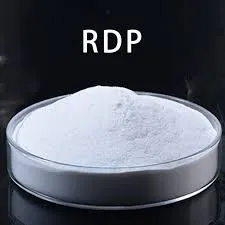
Oct . 13, 2024 12:42 Back to list
Hydroxypropyl Methyl Cellulose Producers and Their Key Characteristics for Industry Applications
Hydroxypropyl Methylcellulose Manufacturers A Comprehensive Overview
Hydroxypropyl methylcellulose (HPMC) is a versatile cellulose ether widely used in various industries, including construction, pharmaceuticals, food, and cosmetics. Its popularity stems from its unique properties, such as water solubility, film-forming ability, and thickening capabilities. As a result, many manufacturers around the world produce HPMC to meet the growing demand from various sectors. This article offers insights into HPMC manufacturers, their production processes, applications, and industry trends.
Understanding Hydroxypropyl Methylcellulose
HPMC is a non-ionic, water-soluble polymer derived from natural cellulose. The introduction of hydroxypropyl and methyl groups into cellulose chains enhances its properties, making it suitable for numerous applications. HPMC is characterized by its ability to form pastes in water, its thermal stability, and its resistance to microbial growth.
The chemical structure of HPMC includes an ether group which allows it to function as a thickener and stabilizer. Additionally, its film-forming properties make it ideal for various applications, such as coatings and adhesives. Depending on the degree of substitution and molecular weight, HPMC can exhibit different viscosities, making it suitable for diverse formulations.
Key Applications of HPMC
1. Construction Industry In the construction sector, HPMC is commonly used as an additive in cement-based formulations and tile adhesives. It improves workability, extends open time, and enhances adhesion to surfaces. Additionally, it helps in controlling the water retention of mortars, which is crucial for proper curing.
2. Pharmaceuticals HPMC is widely used in pharmaceutical formulations, particularly in controlled-release drug delivery systems. It serves as a binder in tablets, a film-forming agent in coatings, and a thickener in suspensions. Its non-toxic nature and biocompatibility make it a preferred choice in the pharmaceutical industry.
3. Food Industry In the food sector, HPMC acts as a thickening agent, emulsifier, and stabilizer. It is often used in low-fat food products to enhance texture while maintaining moisture. Additionally, it is utilized in vegetarian and vegan alternatives to provide the desirable texture of traditional products.
4. Cosmetics HPMC serves as a thickener and stabilizer in various cosmetic formulations, including lotions, creams, and gels. It helps maintain texture and consistency, ensuring that products meet consumer expectations.
Manufacturers of HPMC
hydroxypropyl methyl cellulose manufacturers

The global HPMC market is characterized by the presence of several key manufacturers, each striving to innovate and improve production processes. These companies often invest in research and development to enhance product quality and adapt to changing consumer demands.
Leading HPMC manufacturers include
- Dow Chemical Company Known for its high-quality cellulose ethers, Dow Chemical offers a range of HPMC products tailored for specific applications in construction and pharmaceuticals.
- Shin-Etsu Chemical This Japanese firm is a major player in the HPMC market, providing a variety of cellulose derivatives for multiple applications, including food and personal care.
- Ashland Global Holdings Ashland specializes in providing HPMC for pharmaceuticals and personal care products, focusing on sustainable sourcing and innovative formulations.
- Lotte Chemical With a strong presence in Asia, Lotte Chemical produces a diverse range of HPMC products for construction, food, and pharmaceutical industries.
Industry Trends and Challenges
The demand for HPMC is increasing globally, driven by the growth of industries such as construction and pharmaceuticals. As sustainability becomes a significant focus, manufacturers are exploring eco-friendly production methods and sourcing raw materials from renewable resources.
However, the industry faces challenges, including the availability and cost of raw materials, regulatory compliance, and competition from synthetic alternatives. To remain competitive, manufacturers must invest in advanced technologies and innovative solutions that meet the stringent requirements of modern consumers.
Conclusion
Hydroxypropyl methylcellulose continues to be an essential ingredient across various industries due to its unique properties and versatility. Manufacturers are poised to meet the growing demand through innovation and improved production processes. As industries evolve, HPMC will likely play a crucial role in advancing formulations that meet both performance standards and sustainability goals.
-
Unlocking the Benefits of HPMC Products: A Gateway to Versatile Applications
NewsAug.07,2025
-
Tile Bonding Cellulose: The Key to Superior Adhesion and Durability
NewsAug.07,2025
-
Hydroxypropyl Methylcellulose Powder: The Versatile Component in Modern Pharmaceuticals
NewsAug.07,2025
-
Hydroxyethyl Cellulose: The Versatile Solution for Various Industries
NewsAug.07,2025
-
Hydroxyethyl Cellulose (HEC): The Versatile Polymer for Various Applications
NewsAug.07,2025
-
The Ultimate Guide to Mortar Bonding Agent
NewsAug.06,2025







